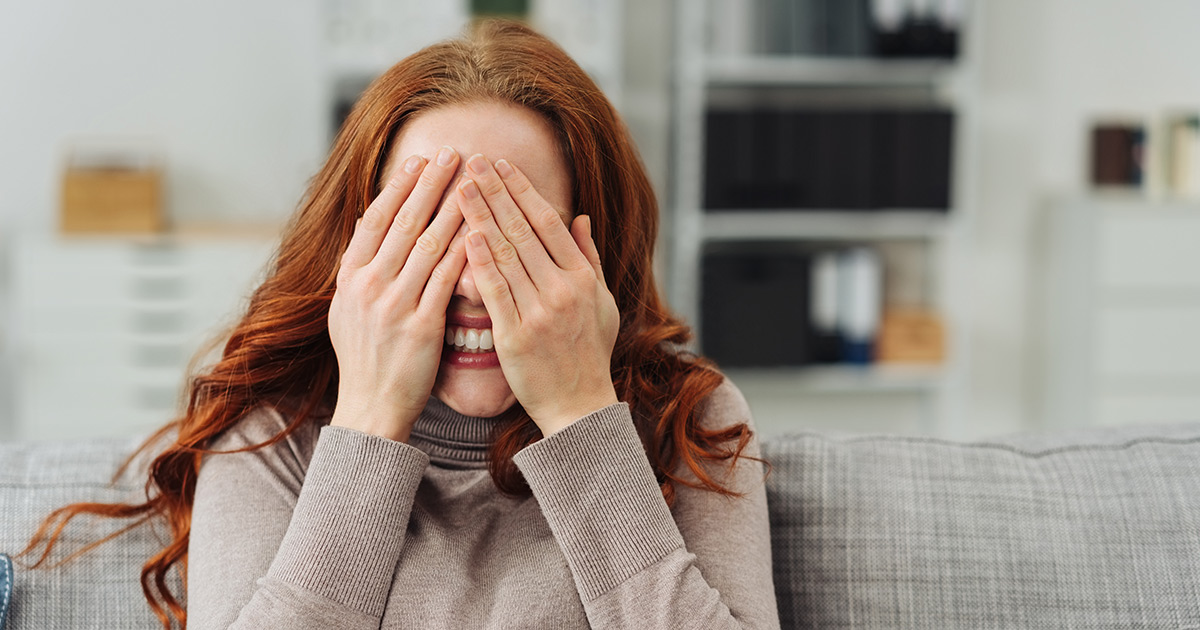
You’ve perfected the art of deep belly breathing, you’re a meditation master, you’ve got mindfulness on lock. But have you tried palming? If you haven’t heard of it, keep reading. It may just be your new go-to move to alleviate tension and even improve your vision.
Palming for relaxation
Perfect for relaxation of the eyes, mind, and body, palming is the practice of covering the eyes with the hands while resting your eyes from all light stimulation.
Originally made famous by Dr. Bates, an ophthalmologist who believed eye exercises could improve one’s eyesight, palming has long been regarded as a useful remedy for tired, strained eyes, headaches, and neck and back tension.
Benefits of palming
Hours of standing under those infamous fluorescent lights of the classroom or staring at your computer or phone screen can cause serious eye strain, painful muscle tension, and extreme fatigue. Like stretching, palming works to alleviate these symptoms and reverse the effects of your daily grind.
Your shoulders, neck, and other tight spots will start to loosen almost instantly. And with regular practice, you may begin to notice clearer vision, a reduction in headaches and dry eyes, and a more stabilized mood.
Here’s how you do it:
- Find a comfortable position. Rest your elbows comfortably on a table or desk. When palming, it is important that you are comfortable and relaxed with room to rest your arms naturally. You don’t want the weight of your head to rest in your hands.
- Straighten your back and neck. Your back and neck need to create a straight line. This is important to prevent any major blood vessels in your spinal cord from being curved.
- Warm up your hands. Rub your hands together, creating some friction and warmth. Or run your hands under warm water.
- Place your hands over your eyes. Position your hands with the base of the right pinkie on the base of the left pinkie and make an upside-down V with your palms.
- Cover your eyes with your relaxed hands. The base of the pinkie fingers should be on the bridge of the nose without obstructing the ability to breathe.
- Check your position. Be sure there is no light to be seen between your fingers. If there is light, correct the placement until there is perfect coverage. Be sure to not put pressure on your eyes or cheekbones. Palms should just be resting over the eye sockets.
- Begin relaxing. Close your eyes and breathe deeply. Concentrate on inhaling and exhaling.
- Clear your mind. Clear your mind and relax. Visualize total blackness, the most relaxing color for the mind. If total darkness is difficult to achieve, visualize a comfortable image or bring up positive thoughts: a starry night, or a favorite moment, person, or object.
- Enjoy the moment. Feel your breaths getting longer and longer. Concentrate on the warmth of your palms. Immerse yourself in relaxation, let go, and breathe.
Fitting palming into your day
Palming lets you slip into darkness letting your mind and muscles relax — something we desperately need in our overly chaotic modern life.
Find at least five minutes without disturbance each day to practice palming. Try the first few moments of your lunch break or right after the school day. Palm before bed. Or get into the habit of preventative relaxation by palming in the morning to alleviate the stress and tension before it builds.
If you truly can’t find the five minutes to incorporate this practice into your day, shoot for even just 20 seconds. While the benefits won’t be as pronounced, you can bust some tension and combat fatigue with only a few seconds of darkness.
Ashley is an award-winning copywriter and content expert with more than a decade of proven results for national and local clients. From brainstorming high-end conceptual content to styling sentences that engage and convert, she’s got a knack for shattering the status quo. When she’s not in full-on writing mode, she’s hanging out with her rascal of a puppy and discussing the plausibility of unicorns with her 8-year-old daughter.
Categorized as: Lifestyle
Tagged as: Teacher Self-Care, Teacher Wellbeing
